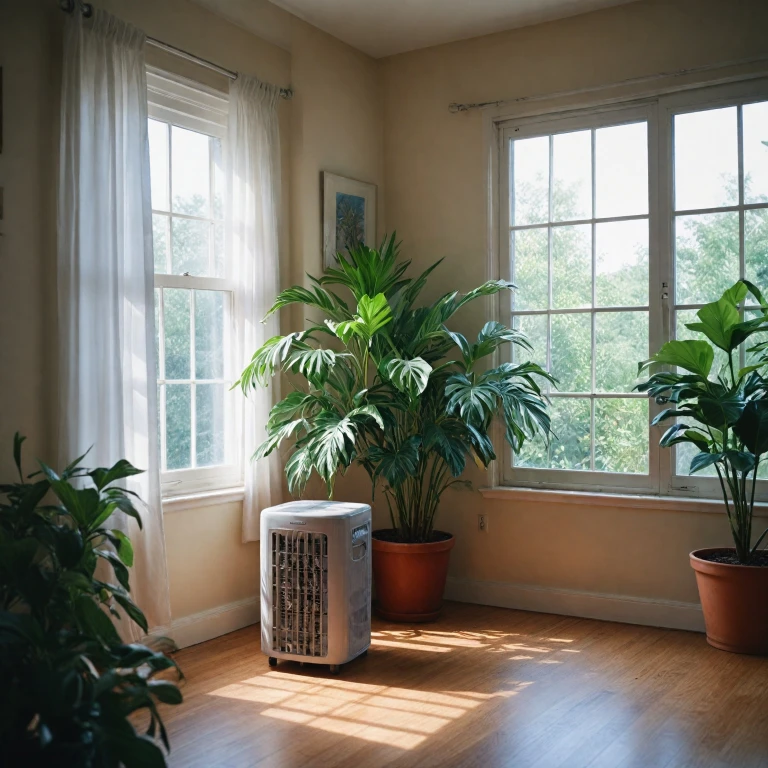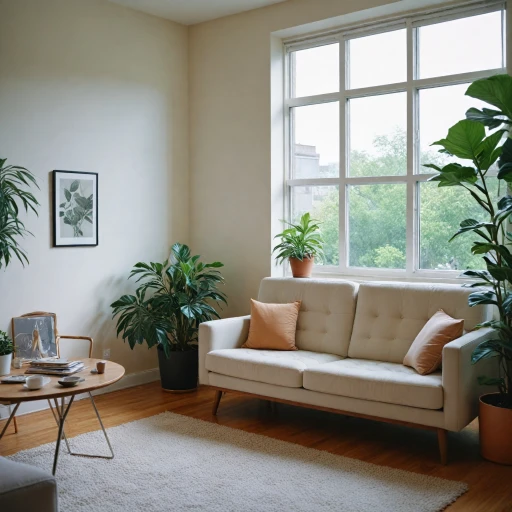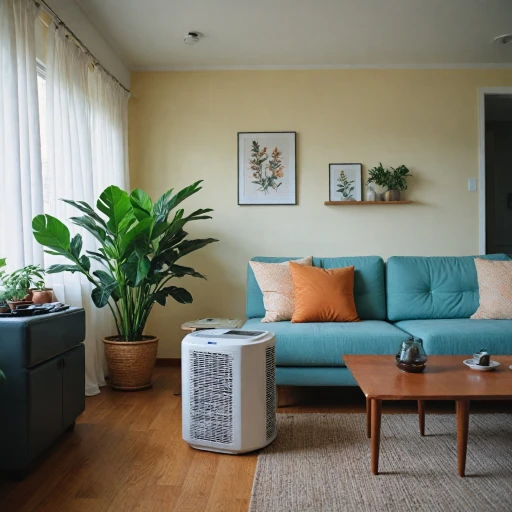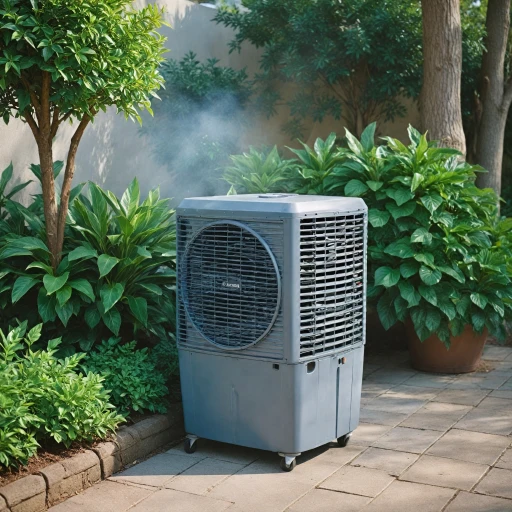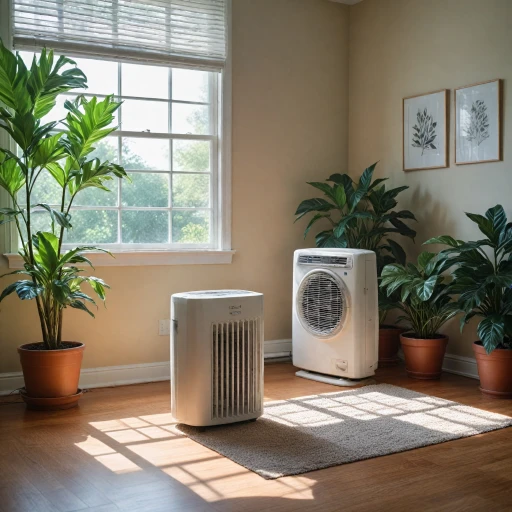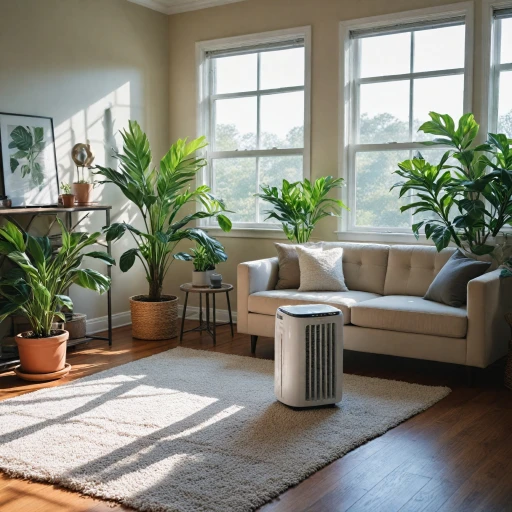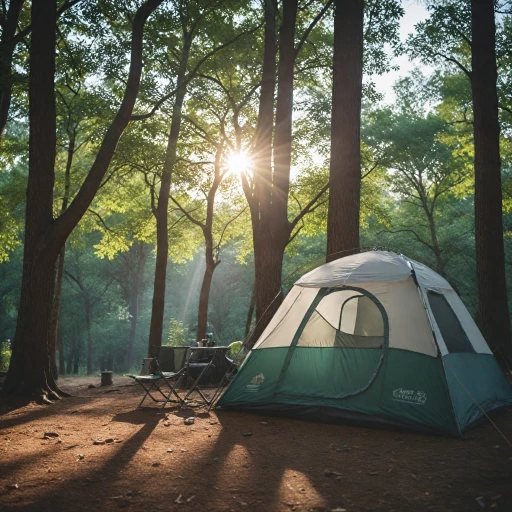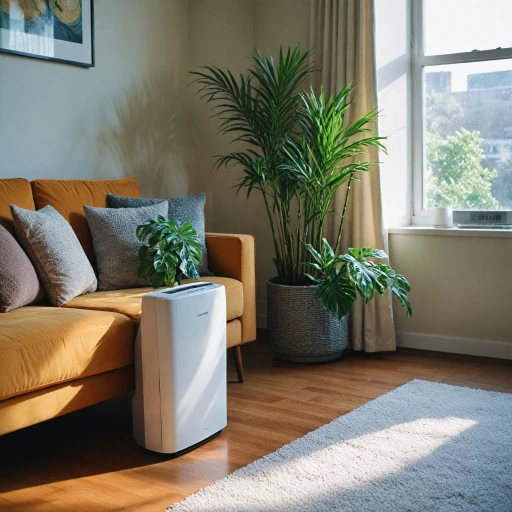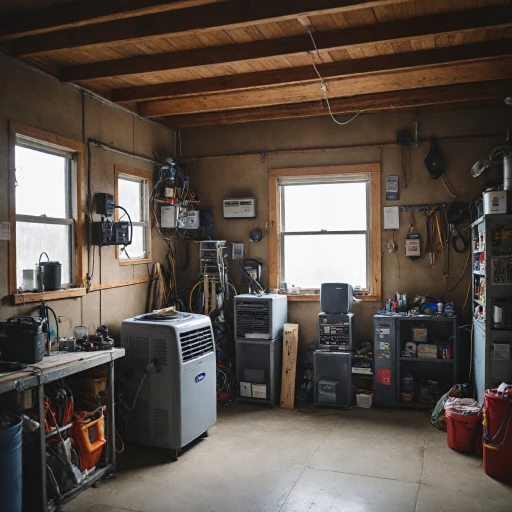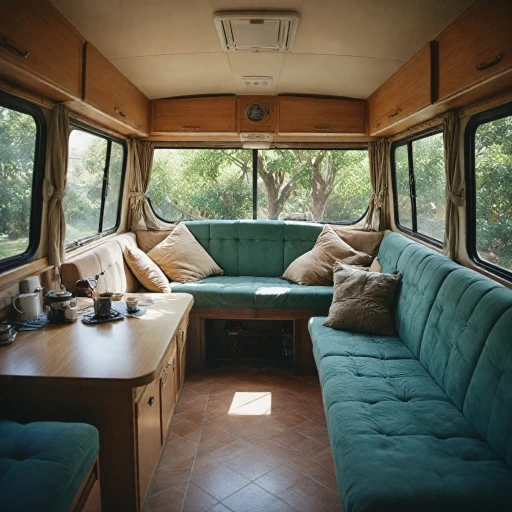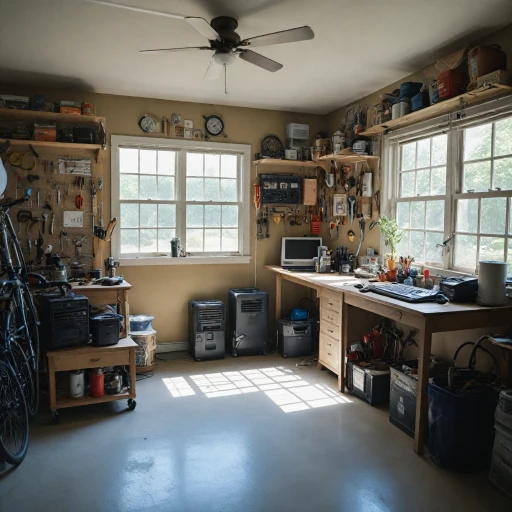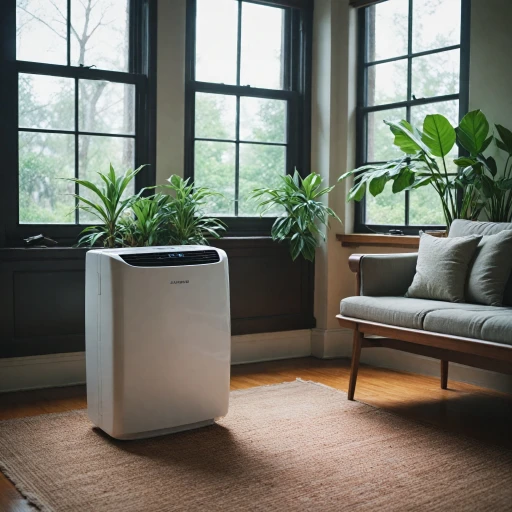
How Evaporative Portable Air Coolers Work
Unveiling the Mechanism of Evaporative Cooling
Evaporative portable air coolers, popularly referred to as swamp coolers, utilize a simple yet effective process to cool the air. Instead of traditional refrigeration techniques, these units capitalize on the natural process of water evaporation, which can significantly reduce the air temperature in a room. The functionality of this cooling method lies in the core principles of evaporation. As water evaporates, it extracts heat from the surrounding air. For an evaporative cooler, this is facilitated by a fan that draws warm air through water-saturated pads, where the evaporation process cools the air before it is circulated back into the room. This method is both energy-efficient and cost-effective. Unlike regular air conditioning systems that demand significant electrical power, evaporative coolers consume less energy, translating into lower operating costs. Additionally, the product price of these units tends to be lower than that of their traditional counterparts, making them an appealing choice for budget-conscious consumers. While many swear by the benefits of evaporative cooling, it's essential to understand that these units are most effective in dry, arid climates. This is because evaporation occurs more readily in low humidity environments, enhancing the cooling effect. In regions with high humidity, the efficiency of these coolers may be compromised. For those interested in exploring more on optimizing climate control with these units, this resource on portable air conditioners offers additional insights. Understanding the operation of evaporative coolers is just the start; subsequent sections will discuss how to choose the right model, maintenance for optimal performance, and compare them with traditional air conditioning solutions.Advantages of Using Evaporative Portable Air Coolers
Why Opt for Evaporative Portable Air Coolers?
Evaporative portable air coolers stand out as a cost-effective alternative to traditional air conditioning units. They bring several benefits that make them a smart choice for many seeking relief from oppressive heat. Here are some noteworthy advantages:- Energy Efficiency: Evaporative coolers consume significantly less energy compared to traditional air conditioning units. This is mainly due to their simple operation which harnesses the natural process of water evaporation to reduce temperature, making them an ideal choice for those looking to cut down on energy consumption and lower utility bills.
- Cost-Effective Solutions: The regular price of evaporative coolers often tends to be lower than traditional air conditioners. Plus, these coolers require less maintenance, contributing to ongoing savings. For those on a tight budget, exploring the best portable air conditioner options might be beneficial.
- Naturally Enhances Indoor Environment: By increasing humidity in dry climates, these coolers not only lower temperatures but also alleviate symptoms of dry air such as dry skin and eyes, making the room more comfortable.
- Environmental Benefits: With no refrigerants involved, evaporative air coolers are a more environmentally friendly choice. They emit no harmful substances, aligning with the interests of environmentally conscious consumers.
- Portable and Easy to Use: Portability is a key feature of these units, allowing easy maneuverability from one room to another. Their user-friendly design ensures simple operation and installation, reducing the need for professional assistance.
Ideal Conditions for Evaporative Cooling
Optimal Environments for Evaporative Cooling
When considering the use of evaporative coolers, one crucial factor that plays a significant role in their efficiency is the environment in which they operate. Unlike traditional air conditioning systems, evaporative coolers thrive in specific conditions that are typically found in dry and hot climates. Understanding these conditions will help you maximize the cooling potential of these cost-effective systems.
Evaporative cooling, also commonly referred to as a swamp cooler, works best when the air is dry with low humidity levels. This is because the principle of operation involves the air cooler drawing in warm air, which then passes through a moistened pad or membrane. The water in the pad evaporates, effectively cooling the air before it is circulated back into the room. Therefore, the unit's cooling capacity is directly influenced by the evaporation process, which is more efficient in arid areas.
Typically, regions with temperatures above 80°F (about 27°C) and humidity levels less than 60% are ideal for these coolers. In such environments, the evaporative air cooling system can achieve a significant drop in temperature, providing a naturally cool and comfortable indoor atmosphere. On days when the humidity is unusually high, these units may not perform to their utmost capacity, highlighting the importance of regular humidity checks in your area.
Moreover, the strategic placement of an evaporative cooler can enhance its effectiveness. Ensuring good ventilation by keeping windows slightly open allows moist air to escape, preventing indoor humidity buildup. For locations where the climate varies significantly, you may explore other options such as choosing the right portable AC unit that suits your specific cooling needs.
Choosing the Right Evaporative Portable Air Cooler
Selecting the Perfect Evaporative Portable Air Cooler
When it comes to picking the right evaporative air cooler, several factors need consideration to ensure an optimal cooling experience. These versatile devices are especially beneficial in areas with low humidity and offer an energy-efficient alternative to traditional air conditioning units.
First, consider the room size. Evaporative coolers are effective in spaces where the air can be refreshed often, making them ideal for open-plan environments. Compare the product price to your budget and assess the cooling capacity. Note that a larger unit price usually corresponds to a bigger capacity to cool air over a wider area.
Next, assess the availability of water. Since these coolers utilize water for evaporative cooling, make sure there is an easy way to refill the water tank. This could be through a continuous water supply connection or a portable tank that is easy to manage.
The combination of a fan with the evaporative cooling mechanism is a key feature. These coolers typically include a fan that helps distribute the cooled air effectively. Check the fan speed settings to ensure you can adjust the temperature to your liking.
Additionally, investigate the energy consumption. Portable evaporative coolers offer significant energy savings compared to regular air conditioning units. This makes them a cost-efficient choice for those looking to lower energy expenses while keeping cool during the heat.
Don't forget to check for additional features such as remote control operation, humidification options, and ease of movement if you intend to transfer the cooler between rooms. A swamp cooler with wheels or a lightweight design might add to the convenience.
Finally, research customer reviews and manufacturer support. Brands like Cajun Kooling offer competitive price sales and warranty services, adding to the overall value of the product.
Maintenance Tips for Optimal Performance
Maintaining Your Cooler for Best Performance
To ensure your evaporative portable air cooler operates at its best, regular maintenance is key. Proper upkeep not only extends the life of your unit but also maintains its efficiency in cooling. Here are some essential tips to keep your cooler performing optimally:- Regular Cleaning: Dust and dirt accumulation can hinder the functioning of your evaporative cooler. Clean the fan, cooling pads, and water tank regularly with a damp cloth to remove any debris.
- Monitor Water Levels: Maintaining appropriate water levels allows for efficient evaporative cooling. Check and refill the water tank regularly. Using cool, clean water improves the cooling effect.
- Filter and Pad Maintenance: The cooling pads in your unit are critical for effective operation. Check them regularly for wear and replace them every 3 to 6 months. Clean the pads occasionally to prevent mold or mildew buildup.
- Check for Wear and Tear: Regularly inspect your air cooler for any signs of wear or damage. Pay special attention to the power cord, air fan, and water pump, and repair or replace any faulty components.
- Safeguard Against Leaks: Ensure that all water connections are secure to prevent leaks, which can lead to water wastage or damage to the unit and surrounding area.
- Optimize for Weather Conditions: During periods of high humidity, reduce water consumption or switch to fan-only mode to maintain cooling efficiency, as evaporative cooling is most effective in dry environments.
Comparing Evaporative Coolers with Traditional Air Conditioners
Key Differences Between Evaporative Coolers and Traditional Air Conditioners
Comparing evaporative coolers with traditional air conditioners reveals distinct functionalities and benefits. While both aim to regulate room temperature and provide relief from heat, their mechanisms and suitable applications vary greatly.- Cooling Mechanism: Evaporative coolers operate by drawing in dry air and passing it over water-saturated pads, utilizing the process of evaporation to reduce air temperature. In contrast, traditional air conditioners rely on a refrigerant to absorb and expel heat, offering a different kind of cooling sensation.
- Energy Consumption: An appealing advantage of evaporative cooling is its energy efficiency. Due to the simple fan and water pump system, these units generally consume less energy compared to the compressor-driven mechanism in air conditioners, aligning with environmentally-friendly practices.
- Product Pricing: If cost is a concern, evaporative air coolers are often priced more affordably than their traditional counterparts, offering a budget-friendly cooling solution. However, it's crucial to assess the product price and individual needs, as evaporative models are particularly effective in dry, low-humidity environments.
- Humidity Control: Traditional air conditioners have a dehumidifying effect, making them ideal for humid climates. In contrast, swamp coolers can increase indoor humidity, which could be counterproductive in already humid areas.
- Maintenance: Regular upkeep is essential for both systems; however, evaporative units require more frequent water source checks and pad replacements. Understanding maintenance protocols ensures optimal performance and longevity of your investment.
- Application and Mobility: Portable evaporative air coolers provide ease of movement and installation flexibility, making them suitable for varied spaces without requiring professional setup. On the other hand, traditional units often demand fixed installations and might necessitate professional services for setup and routine maintenance.
